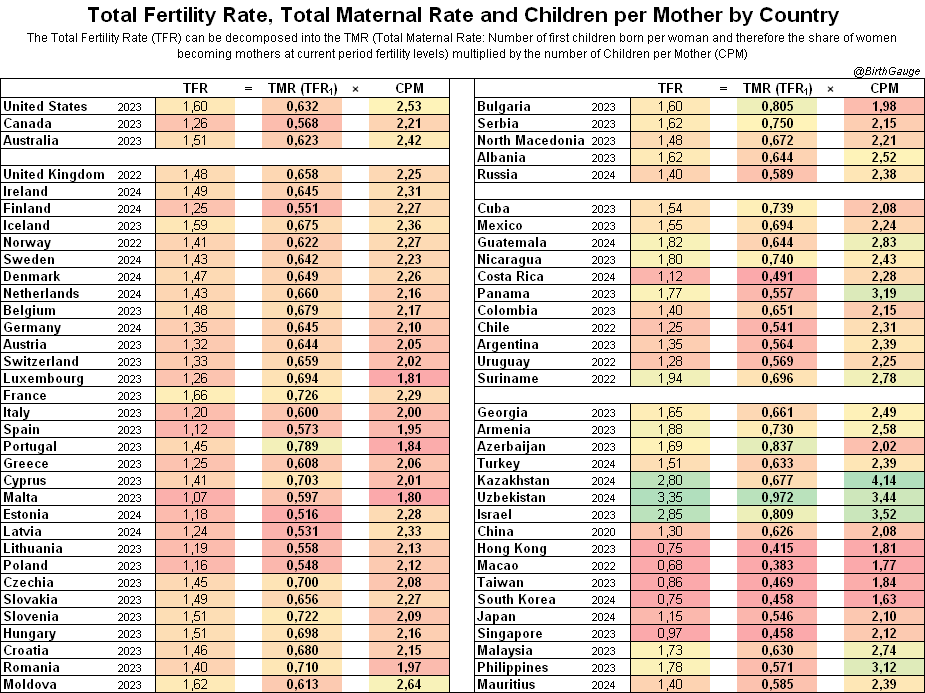
How to get URL link on X (Twitter) App


 @StephenJShaw France for example has a higher TFR than the US because families are started more frequently, but these families tend to be smaller. Families in Bulgaria and Portugal are small, but the TFR isn't that low within the EU because the TMR is fairly high.
@StephenJShaw France for example has a higher TFR than the US because families are started more frequently, but these families tend to be smaller. Families in Bulgaria and Portugal are small, but the TFR isn't that low within the EU because the TMR is fairly high.

 The lowest average birth order is in South Korea, where third births are already rare and fourth or higher order births are pretty much nonexistent. The highest average birth order of the countries shown is in Israel, where fifth and higher order kids are pretty common.
The lowest average birth order is in South Korea, where third births are already rare and fourth or higher order births are pretty much nonexistent. The highest average birth order of the countries shown is in Israel, where fifth and higher order kids are pretty common.
https://twitter.com/DumbLayman/status/1623712548360011777Put into words:

 While Hong Kong, Madrid and Tokyo offer the highest life expectancy to their residents, the biggest "urban bonuses" are found in Moscow and the SF Bay Area.
While Hong Kong, Madrid and Tokyo offer the highest life expectancy to their residents, the biggest "urban bonuses" are found in Moscow and the SF Bay Area.

https://twitter.com/Molson_Hart/status/1443014518729228298The answers to the first question are already well known anyway, so here are some possible explanations for the recent decline (in no particular order, just as they came up in my mind).